-
Posts
12440 -
Joined
-
Last visited
-
Days Won
554
Content Type
Profiles
Forums
Events
Everything posted by Fiery
-
1) Reviewers do not rely on our reference results, but they use their own test results. And apart from reviewers, not many folks are interested in single-core benchmarks. Why to have 4, 6, 8 or 18 cores in your CPU and only use just one to check how great your CPU is? 2) No, we have no plans on that.
-

Motherboard Temp for the Asus Maximus VI Formula
Fiery replied to Feklar's topic in Hardware monitoring
I'm afraid we have no specific idea on what to do about that. Try to ask the same question in a forum that's geared towards Asus ROG users and products, or specifically Maximus VI motherboards and their owners. -

No Sensor Data w/EVGA 1080 Ti FTW3 (RESOLVED)
Fiery replied to owcraftsman's topic in Hardware monitoring
Thank you, that's great news!- 10 replies
-
- ftw3 sensors
- ftw3
- (and 4 more)
-
No, we haven't. But, let's hope that the new BIOS that Grainger posted above helps.
- 59 replies
-
- asus
- temp issues
- (and 5 more)
-
It's hard to provide proper feedback on that. On the one hand, 45-50% throttling is quite a lot, so I'd take it as alarming. However, since it's a brand new notebook, there shouldn't be any cooling issue due to hardware failure or dust clogging up the exhaust ports, etc. So it may just be normal the way it is. It may be worth checking what happens if you restart your computer, open AIDA64, open System Stability Test, but don't start any test there. Just let it sit and watch as the throttling is monitored. Now, start a game, play for 30 minutes, and check back to the System Stability Test whether it indicates that the computer was overheating without running a stress test but while playing a game. If throttling exceeds 25% while playing a game, I'd take it back to the shop and inquire the sales persons about it.
-
Try to go to AIDA64 / main menu / File / Preferences / Stability, and de-activate Embedded Controller (EC) support. You need to restart AIDA64 after altering that option. Let me know if it helps. Also, make sure to not have Asus AI Suite installed on your system, and that if you had it before, then all its background services are also uninstalled properly. AI Suite may just collide with the sensor polling activities of AIDA64.
- 11 replies
-
- prime b350-plus
- asus
-
(and 7 more)
Tagged with:
-
For nVIDIA video cards the video memory information is only detected for the first video adapter. Maybe the issue is that ForceWare manages your video cards in a different order than what you expect based on the PCIe slot arrangement?
-
Thank you for your feedback
-

fixed: Windows 10 Fall Creators Update: AIDA64 can not read stornvme info
Fiery replied to hsm06's topic in Bug reports
Thank you both for your feedback- 10 replies
-
- stornvme
- fall creators update
-
(and 2 more)
Tagged with:
-

PCH temperature is gone (Asus Rampage IV Black Edition)
Fiery replied to namuk's topic in General Discussion
1) What motherboard do you have? 2) Are you referring to the temperature labelled as "PCH" or the one labelled as "PCH Diode" ? -
1) Single-core PC benchmarks aren't relevant in this day of age. Also, it would grealty overcomplicate the maintenance of the reference benchmark results database. 2) It's not possible to limit the number of cores or CPU threads to be utilized by the AIDA64 multi-threaded cache and memory bandwidth benchmarks. It's by design, since those benchmarks automatically calibrate themselves to use the optimum number of cores and optimum settings (code path) to squeeze the maximum bandwidth out of the caches and RAM.
-

How precise are software voltage readings (ASRock X370 Gaming K4)
Fiery replied to ringo's topic in Hardware monitoring
It's due to the difference in motherboard and CPU as well. -

How precise are software voltage readings (ASRock X370 Gaming K4)
Fiery replied to ringo's topic in Hardware monitoring
It's not that high, so I wouldn't be alarmed by it anyway. -

How precise are software voltage readings (ASRock X370 Gaming K4)
Fiery replied to ringo's topic in Hardware monitoring
Thank you. In that case there's a good chance the +5VSB reading is invalid. Check if you can see that reading in the BIOS Setup or in ASRock's own monitoring utility. If it's not there, it's an invalid reading that you can ignore. -

How precise are software voltage readings (ASRock X370 Gaming K4)
Fiery replied to ringo's topic in Hardware monitoring
What motherboard do you have? -

Support for new Thermaltake SMART DPS G Power Supplies
Fiery replied to Zoork's topic in Hardware monitoring
Thank you, that's great news -
I've just sent you a private message.
-
Thank you for letting us know about the root cause of that issue.
-

No Sensor Data w/EVGA 1080 Ti FTW3 (RESOLVED)
Fiery replied to owcraftsman's topic in Hardware monitoring
Please upgrade to the latest beta version of AIDA64 Extreme available at: https://www.aida64.com/downloads/latesta64xebeta After upgrading to this new version, make sure to restart Windows to finalize the upgrade. Let me know if it helps.- 10 replies
-
- ftw3 sensors
- ftw3
- (and 4 more)
-

fixed: Asus Maximus X Hero not all sensors detected
Fiery replied to facboy's topic in Hardware monitoring
We've implemented Asus EC bank switching in the latest AIDA64 beta build: https://www.aida64.com/downloads/latesta64xebeta You need to enable both Embedded Controller (EC) support and Embedded Controller (EC) bank switching in AIDA64 / main menu / File / Preferences / Stability. That will unlock a few additional sensor readings on your motherboard. Make sure to not have Asus AI Suite or any of its background services installed on your system. If you have any of those left around, a collision may occur while AIDA64 tries to perform EC bank switching, and it may just cause a system lockup or sudden system restart. -
We've implemented Asus EC bank switching in the latest AIDA64 beta build: https://www.aida64.com/downloads/latesta64xebeta You need to enable both Embedded Controller (EC) support and Embedded Controller (EC) bank switching in AIDA64 / main menu / File / Preferences / Stability. That will unlock a few additional sensor readings on your motherboard. Make sure to not have Asus AI Suite or any of its background services installed on your system. If you have any of those left around, a collision may occur while AIDA64 tries to perform EC bank switching, and it may just cause a system lockup or sudden system restart.
-

ASUS Maximus VIII Extreme temperature sensors
Fiery replied to PrinzVonBillAir's topic in Hardware monitoring
We've implemented Asus EC bank switching in the latest AIDA64 beta build: https://www.aida64.com/downloads/latesta64xebeta You need to enable both Embedded Controller (EC) support and Embedded Controller (EC) bank switching in AIDA64 / main menu / File / Preferences / Stability. That will unlock a few additional sensor readings on your motherboard. Make sure to not have Asus AI Suite or any of its background services installed on your system. If you have any of those left around, a collision may occur while AIDA64 tries to perform EC bank switching, and it may just cause a system lockup or sudden system restart. -

FanSpeeds&ThermalSensors @Asus Crosshair Hero VI
Fiery replied to CottonEyedJoe's topic in Hardware monitoring
We've implemented Asus EC bank switching in the latest AIDA64 beta build: https://www.aida64.com/downloads/latesta64xebeta You need to enable both Embedded Controller (EC) support and Embedded Controller (EC) bank switching in AIDA64 / main menu / File / Preferences / Stability. That will unlock a few additional sensor readings on your motherboard. Make sure to not have Asus AI Suite or any of its background services installed on your system. If you have any of those left around, a collision may occur while AIDA64 tries to perform EC bank switching, and it may just cause a system lockup or sudden system restart. -

Asus MAXIMUS IX APEX (Adding a monitoring option)
Fiery replied to jjxaker's topic in Hardware monitoring
We've implemented Asus EC bank switching in the latest AIDA64 beta build: https://www.aida64.com/downloads/latesta64xebeta You need to enable both Embedded Controller (EC) support and Embedded Controller (EC) bank switching in AIDA64 / main menu / File / Preferences / Stability. That will unlock a few additional sensor readings on your motherboard. Make sure to not have Asus AI Suite or any of its background services installed on your system. If you have any of those left around, a collision may occur while AIDA64 tries to perform EC bank switching, and it may just cause a system lockup or sudden system restart. -
The above mentioned new AIDA64 beta update is now available for download: https://www.aida64.com/downloads/latesta64xebeta Let me know how it works.




